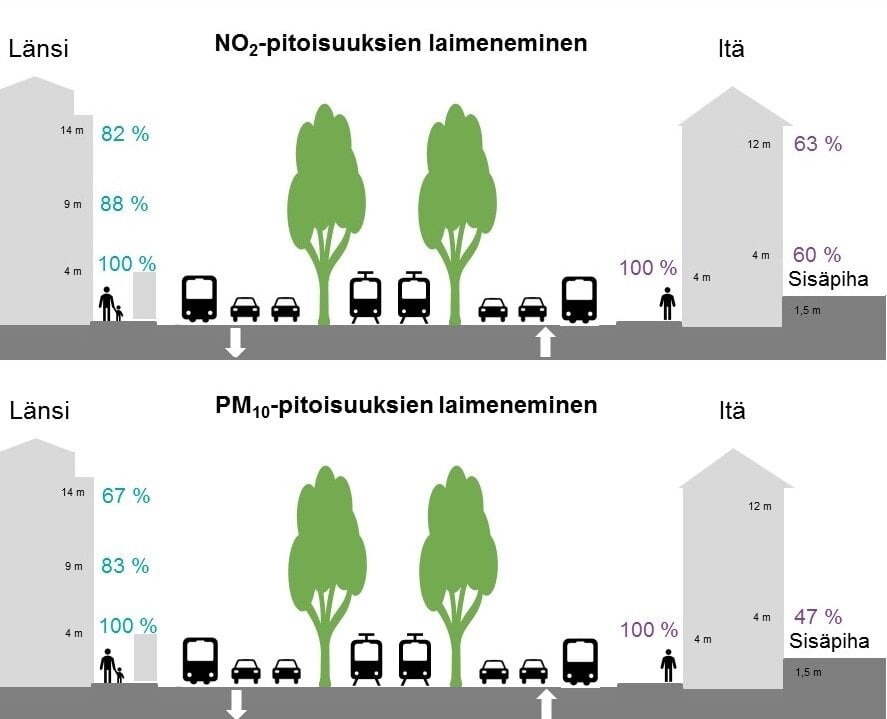Effect of distance and height on air quality
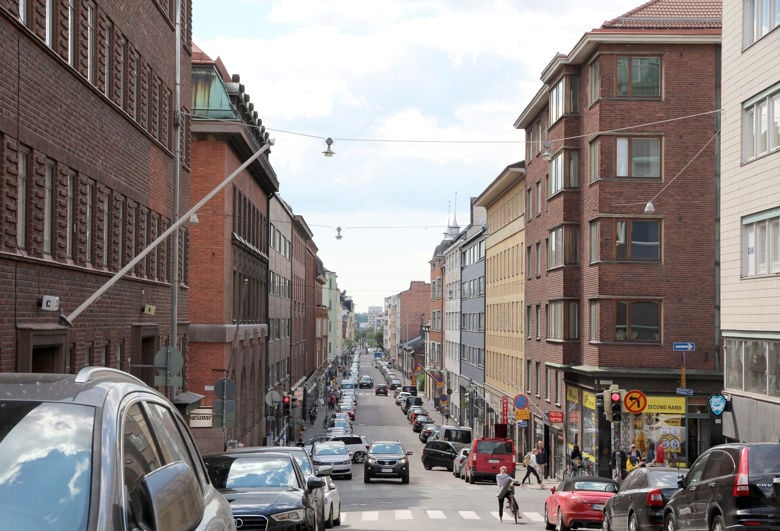
Air quality is clearly improved when moving further away from a street or road, horizontally or vertically. The dilution of traffic emissions is affected by the openness and ventilation of the area as well as the terrain, heights and placement of the buildings surrounding the street or road, and the width of the street or road.
Ventilation lowers concentrations
Along an open route, the concentrations of air pollutants are diluted fairly rapidly when moving further away from the route. In contrast, ventilation is weak in street canyons lined with tall buildings, causing emissions to spread and be diluted poorly. In narrow street canyons, pollutant concentrations can become high even at low traffic volumes. In valleys and low-lying areas, for example, the surrounding high terrain reduces ventilation and increases pollution levels.
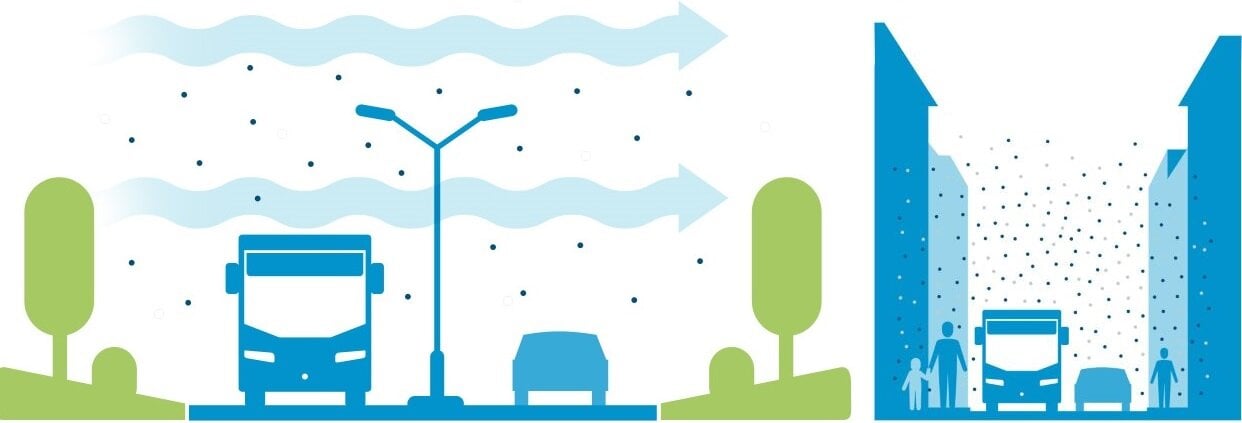
The wider the street, the lower the buildings and the more varied the placement of the buildings, the better the ventilation of the street. A distinct whirlwind is created in narrow street canyons, and the mixing of this whirlwind and the wind above it remains poor. This allows pollutants to accumulate in the street space and concentrations to rise, especially on the prevailing wind side. The prevailing wind direction is usually southwest.
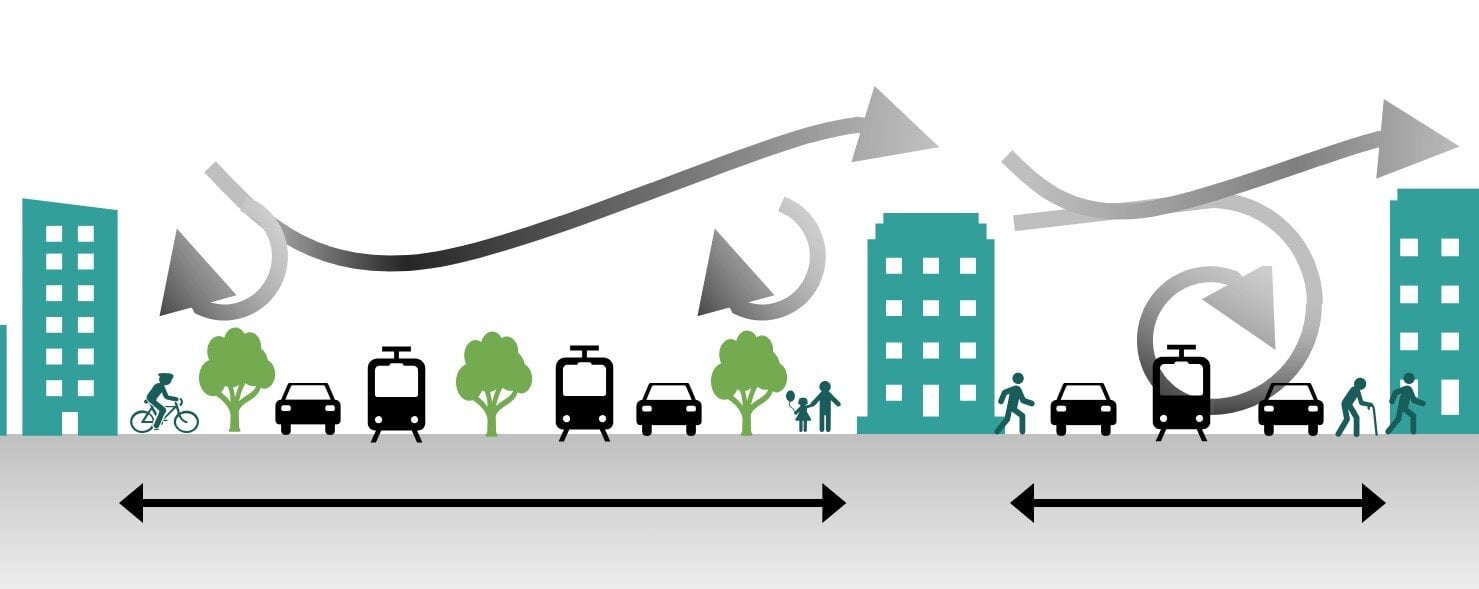
Distance from traffic lowers concentrations
When moving further away from the street, concentrations are diluted fairly rapidly. HSY studied the dilution of air pollutants in a street canyon in the Mäkelänkatu area in the so-called KAILA study in 2017−2019. Nitrogen dioxide concentrations were measured using passive samplers at breathing height and at different distances from the street canyon. The long apartment building lining the street reduces the spread of air pollutants to the courtyard or further behind the buildings, but it causes higher concentrations in the street canyon, on the street-side walls of the apartment building. The concentrations are clearly lower than in the openings between the apartment buildings lining the street than in the canyon-shaped area. At a distance of 125 metres, the concentrations have already halved, to about the level of the urban background.
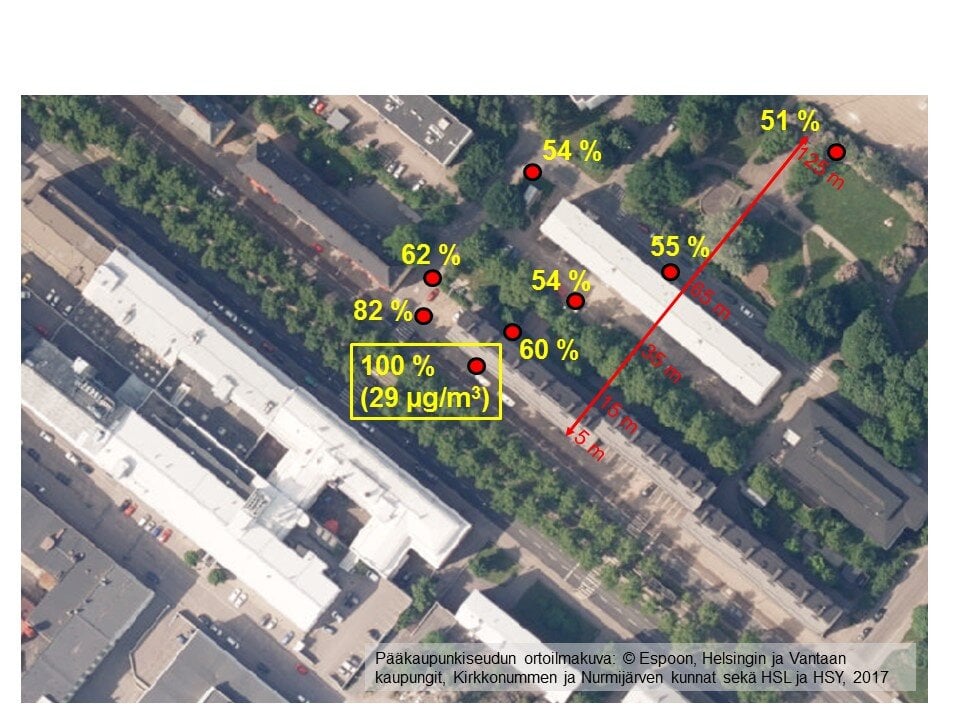

Concentrations fall when moving upwards and buildings protect courtyards
The air is cleaner at roof level and in the courtyard than on the street level. The concentrations of air pollutants fall when moving upwards and are clearly lower in the courtyard of the building than on the street side. Indoor air particle concentrations can be reduced by centralising the supply air intake and by placing it high and further away from the emission source.
In the KAILA study, nitrogen dioxide (NO2) concentrations on the street-side wall at the eaves level (14 m height) were diluted to an average of 82% and thoracic particle (PM10) concentrations to approximately 67% of the street level concentrations at breathing height. In the courtyard occupied zone behind the apartment buildings, nitrogen dioxide concentrations at breathing height were 60% and thoracic particle concentrations 47% of the street-side concentrations.
